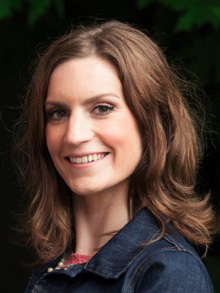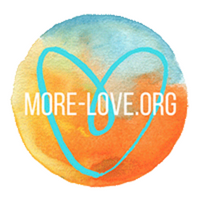
Dismantling fatphobia and weight stigma, as well as other systems of body oppression at a systemic and institutional level, will be necessary if we are to put an end to eating disorders.
The discrimination facing larger bodies is serious: weight stigma has been shown to impact mental and physical health by increasing risk for elevated blood pressure, unhealthy weight control and binge eating behaviors, bulimic symptoms, negative body image, low self-esteem, and depression among children, adolescents, and adults (Tylka et al., 2014). Rebecca Puhl’s research indicates a 66% rise in weight-based discrimination over the past 10 years.
Our society reinforces and maintains the toxic hierarchy of acceptable bodies, while openly and aggressively criticizing the vast majority of people who fall outside the confines of socially acceptable body size. Meanwhile, bodies that meet or conform to the cultural beauty and health ideals enjoy increased power, privilege, status, and access.
It is simply impossible for every body to meet the socially constructed ideals of beauty or health in regards to body size, skin color, physical ability, neurological presentation, gender identity, etc. This leads to the oppression and discrimination of those who do not conform and increases the risk of mental and physical health consequences. In attempts to free themselves of these cultural aggressions people experiencing weight stigma may engage in dangerous, harmful behaviors in order to change their body’s weight or shape.

Non-Diet/Health At Every Size® Fact Sheets, Guidelines, and Scripts
- Fact Sheets About Weight Stigma, Diet Culture, Kids and Diets, and More
- Non-Diet Parent Guidelines
- Non-Diet Parent Scripts About Responding to Fat Talk, Diet Talk, and More
- What to Say/Not Say When Talking About Bodies and Food
Social Determinants of Health
Social Determinants of Health take into consideration the broader factors in the context in which we live and the way those factors impact population health. These factors include things like income and wealth distribution, education opportunities, unemployment and job security, food insecurity (regular and reliable access to food), housing, social exclusion and inclusion, social safety, health services (access to quality, unbiased, safe care), race, gender, disability, and indigenous status.
There are many factors that impact our health and not all of them are within our individual control. Actually, the factors that are within our control, or our individual responsibility, represent only a small proportion of the total factors that impact our health.
Yet public health campaigns, individual healthcare providers, and wellness gurus reliably target individual behavior as the pathway to help. This not only limits the impact that these interventions can have on health, but also increases the risk of shame and stigma being experienced by people who do not align with culturally defined acceptable behaviors or physical presentation of “health.”
This brings us back to the importance of applying a social justice lens to health. Our current systems and institutions perpetuate a structure of privilege, status, and access to some bodies while restricting it from others. This is not health promoting. It is actually causing mental and physical harm and worsening the health of our society and its individuals. It narrows our view of what impacts our health and erases our lived experiences. Shifting to a social justice framework and considering social determinants of health helps us to tailor our care to be more equitable and makes space for all bodies to exist with respect and free from prejudice and discrimination.
Health at Every Size®(HAES®) is an approach to both policy and individual decision making that is grounded in a social justice framework and considers social determinants of health.

Free Cheat Sheet: Body Positive Parenting Essentials
⭐ Support your child in developing a healthy body image
⭐ Learn the essential steps and family rules you need to have in place for positive body image.
⭐ Make your home more supportive for everyone with six simple steps that anyone can do.
Focusing on well-being by broadening perspective on health
It has been my experience that the more fraught a person’s relationship with food and body is, the more time, energy, and focus they spend on food and body. These efforts can result in negative impacts on health (i.e. greater body dissatisfaction, obsessive thoughts about food, weight cycling). In contrast, the more at peace a person is with food and their body, the more time, energy, and space they have for other, often more fulfilling thoughts and activities that positively impact health and well-being.
First, as a woman with many privileges (thin, white, without illness or disability, etc.) my actions of being radically counterculture around food and body are met with little resistance in the world as compared to those who do not possess these privileges.
By giving myself permission to eat with pleasure and in attunement to what feels good and supportive of my overall wellbeing I am able to remove the restrictive, external rules of diet culture. I am also able to rid my food choices of morality thereby creating freedom from the cycle of shame that so often drives disordered eating behaviors.
I talk about food and my experience of it with curiosity and without judgment. Food is never tied to earning or deserving, to compensation or punishment, nor to moral superiority or failing. Our bodies are born with an innate need for nourishment and our food provides us with pleasure in order to ensure this nourishment is consistent. Enjoying food is not a flaw nor something to be fixed or controlled. In fact, in honoring our appetite and learning to listen to and honor our body’s needs we are best positioned to take care of it.
Taking this radical approach to food provides us with an alternative to the sea of diet culture in which we swim. Some people have been swimming in the sea of diet culture for so long they don’t even realize it’s there. However, if we can provide a contrast to what they are used to, a safe harbor of body liberation and intuitive connection, they can start to do the work of sorting out what is actually most healthful for them.
Preventing eating disorders
To prevent eating disorders, we must dismantle fatphobia and diet culture and bring awareness to social justice and social determinants of health. We must recognize and celebrate body diversity and dismantle the hierarchy of acceptable and respectable bodies.
We must provide better training to our healthcare professionals, educators, coaches, caregivers, and parents around the factors that increase the risk for developing an eating disorder (genes, trauma, illness, culture and environment, weight stigma and bias).

Non-Diet/Health At Every Size® Fact Sheets, Guidelines, and Scripts
- Fact Sheets About Weight Stigma, Diet Culture, Kids and Diets, and More
- Non-Diet Parent Guidelines
- Non-Diet Parent Scripts About Responding to Fat Talk, Diet Talk, and More
- What to Say/Not Say When Talking About Bodies and Food
We must move away from a binary system and towards a space of plurality along the continuum of human experience. Humans are not just fat or thin, black or white, gay or straight, feminine or masculine. We exist at the intersection of multiple identities. Bringing awareness allows us to engage in helpful vs harmful ways and set us up for the best chance of eating disorder prevention.
Cultivating an environment of peace with food and body at home can look like:
1. Nurturing body trust through curiosity and connection.
2. Supporting autonomy and independence in eating by providing regular and reliable meals and snacks which contain a variety of nourishing and pleasurable food, and then, without pressure, allowing the child to be in charge of whether and how much they eat.
3. Exploring and celebrating human body diversity with intention and making space for curious questions and observations without shaming.
4. Avoiding judgments and morality when discussing food and body whether you are with your kids or not.
Important leaders in this space
Desiree Adaway describes a social justice approach as “focusing on the unequal social power between groups that leads to some groups having privilege, status, and access while other groups are denied these things.”
Carmel Cool describes body liberation in a social justice context as “honoring the fundamental rights of fat people to exist without prejudice and discrimination and believing that people’s bodies are not problems to be solved.”
Jes Baker describes body liberation as “freedom from expectations. As recognizing the systemic issues that surround us and acknowledging that perhaps we’re not able to fix them all on our own.”

Meghan Cichy, RDN, CEDRD, CSP, CD, Creating Peace with Food, LLC
I work with clients of all ages who are on the spectrum of disordered eating from weight control dieting to eating disorders. I work to meet them where they are while supporting them in identifying and moving towards their value-driven life. Meeting clients where they are means making space for, trusting, and validating their lived experiences, acknowledging their fears and anxieties, and recognizing their tools for protection and self-preservation. It means giving them a place to explore their body story and how it relates to the way they nourish themselves with food, movement, and self-care. My clients’ body stories are all unique. Some contain a few pivotal moments that have shaped the way they move through the world. Others express more subtle but deeply ingrained threads of overt or covert expectation. Either way, when these experiences occur in childhood they set off a cascade of learning and adapting that lead to a lifetime of practiced survival behaviors. Getting to a place of safety where one can start to let go of the behaviors that are no longer serving them and begin to practice other life-enhancing and value-driven behaviors can take years. I am dedicated to coming alongside my clients as a resource as they do this challenging and valuable work.
